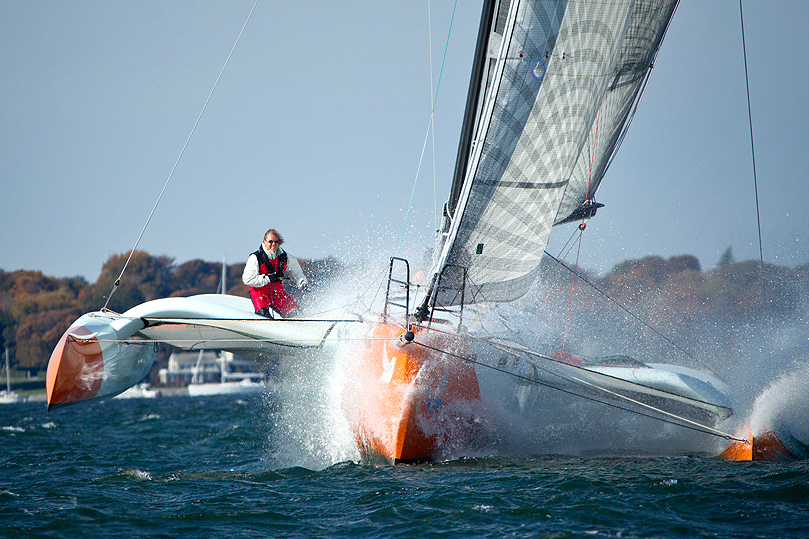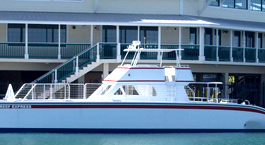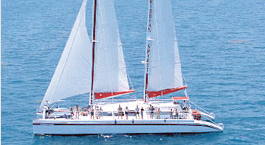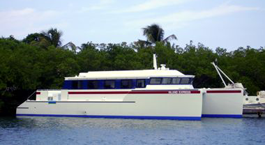Photos - © Clint Clemens
Three Little Birds is the first PT 11. The design started out as a conceptual project between WD and Aquidneck Custom Composites to create a new line of Performance Multihulls. Kevin Baxley, the owner of Three Little Birds, became aware of the idea and expressed interest in the design as a replacement for his existing production trimaran. Kevin was initially considering a larger catamaran but realized that a smaller, more easily sailed boat suited his current requirements. He also liked the higher performance of the trimaran platform. Kevin wanted a boat that sailed well, was easily handled by a small crew, with a comfortable interior. Three Little Birds fulfills all of these requirements. She has a full cruising interior, including a refrigerator and separate freezer, pressure hot and cold shower in an enclosed head, functional galley, dedicated chart table/navigation station, roomy double bunk forward with a single bunk in the saloon and a quarter berth to starboard. She sports an inboard diesel with sail drive. While at first this seems to go against the performance aspects, the inboard diesel has several points in its favour. The range is greatly increased over a gasoline outboard. Safety is enhanced with the diesel fuel versus gasoline. The weight of the engine and transmission is situated much closer to the centre of the boat rather than an outboard on the stern, which exacerbates pitching motions in a seaway.
In the interests of both safety and speed, the PT 11 has much larger amas than are typically seen on a trimaran of this size. The high volume amas, which are as long as the main hull, give a significant stability advantage over most trimarans her size. The long waterline length increases the speed potential, while the amas' full length reduces the pitchpoling potential. The fine bows with a clean entry and wave piercing design go through waves with ease.
The rig is built by Hall Spars. The mast is a rotating wing section and the boom is fitted with a platform and lazy jacks for ease of sail handling. The bowsprit is freestanding with no bob stay and is removable if required. The mainsail cover is cleverly incorporated into the boom platform (an ACC idea -- works great) without any of the bulk that is typical of most sailcovers that are permanently attached. A code 0 upwind sail and an asymmetrical spinnaker are flown from the bowsprit. The mainsail is a square head fully battened mainsail, and the jib is mounted on a Harken furling assembly on the forestay.
She is demountable, which is accomplished with tapered sockets in the main hull. The beams are permanently attached to the amas. The beam/ama combination is held to the hull with a pin and bolt arrangement, along with fore and aft stays. When assembled there are no water stays or folding mechanisms. The demounting is strictly for overland transport and storage.
Sailing performance is excellent. She has proven to be well balanced and a joy to sail. Going to windward with the deep daggerboard and powerful sail plan and amas is a dream. Off the air she picks up her skirts and flies. In light air she will ghost along on the lightest zephyr, easily matching the wind speed. With a little bit more velocity she readily gets into the teens and so far has hit a top speed of 24 knots. Everyone involved with the project is thrilled with the end result. For pictures and a chronicle of her build, please go to the blog at the Aquidneck Custom web site: http://www.aquidneckcustom.com/blog/










